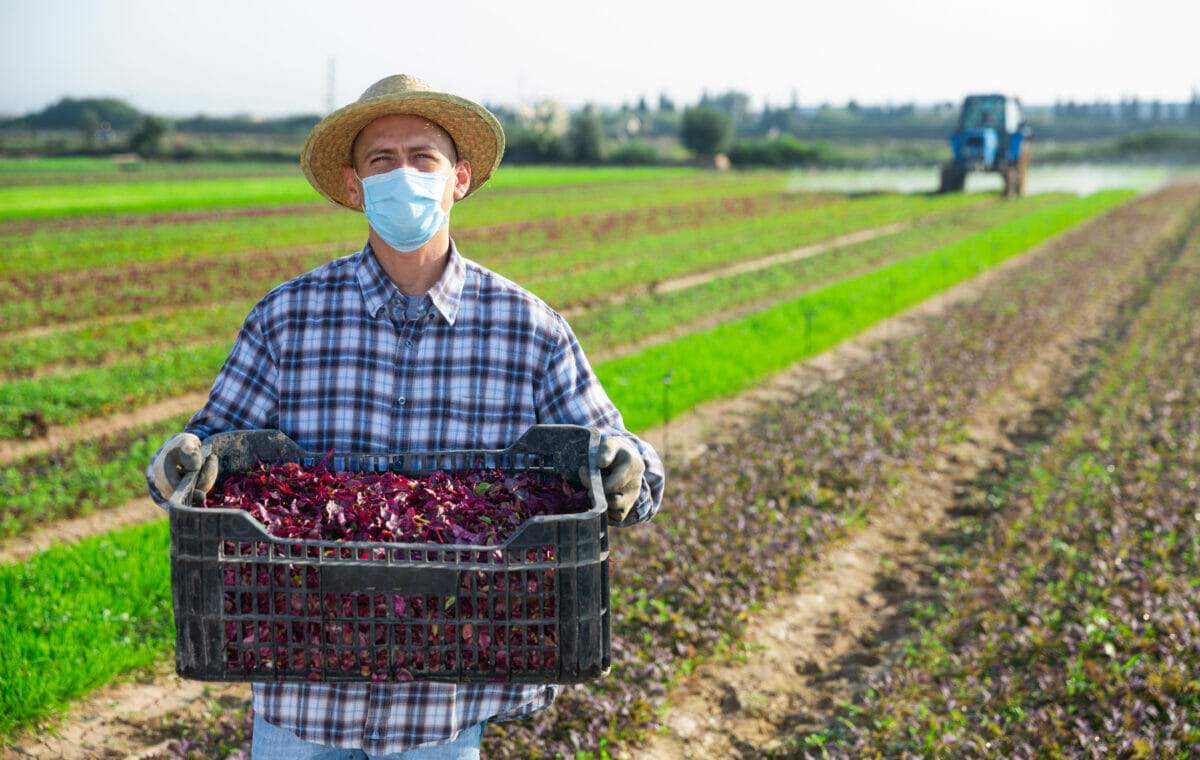Farmworkers, meatpacking workers and grocery store employees will be reimbursed up to $600 each.

The COVID-19 pandemic has made it much more public how vital certain jobs are, namely those in food production and sales: farmworkers, meatpacking plant workers and grocery store employees.
Those workers, in addition to working for sometimes low wages in sometimes highly dangerous conditions—and sometimes both—were forced to work straight through the pandemic, as they were declared essential workers. Sometimes at their own expense, these workers had to procure protective equipment, virus testing and childcare. This week, USDA chief Tom Vilsack announced a grant program to defray some of those costs.
According to a press release from the USDA, the funding will consist of some $700 million, and it will be called the Farm and Food Workers Relief grant program. That money will come out of the Consolidated Appropriations Act, 2021, a massive stimulus and spending program designed to provide money for both COVID-19 relief and for general government services.
Various state agencies, nonprofits and tribal groups will be able to apply for aid ranging from $5 to $50 million, which will go to farmworkers and meatpacking plant workers. But the requirements specifically say that this money is to make up for costs these workers incurred due to the COVID-19 pandemic, including childcare and the purchase of protective equipment. Childcare costs were quite high for these workers, as many agricultural workers qualified as essential and could not work remotely. Individual workers can receive up to $600.
There are some added quirks to this funding that go along with the Biden administration’s interest in providing funding to underserved communities. Around $20 million will go to a pilot program to figure out how to compensate grocery store workers, the first time such a program has been undertaken. Some cities and individual employers provided hazard pay, often in the form of a temporary raise, but not in a widespread or consistent manner.
The grants will also require applicants “to show connectedness to hard-to-reach worker populations either directly or in partnerships with other local organizations.” These populations include workers who do not speak English, members of minority groups that are reluctant to apply for aid (or who have, through various bits of institutionalized racism, been excluded), unhoused workers and many more who have fallen through the cracks.
This money can certainly help, although it will require some time and red tape. Organizations will have to apply, then those organizations will have to find and assist individual workers. And the specifics of reimbursement for COVID-19 costs, rather than, say, a higher minimum wage, make this inherently a short-term response. But a short-term response is better than no response.
What about us Seniors that are at poverty levels?